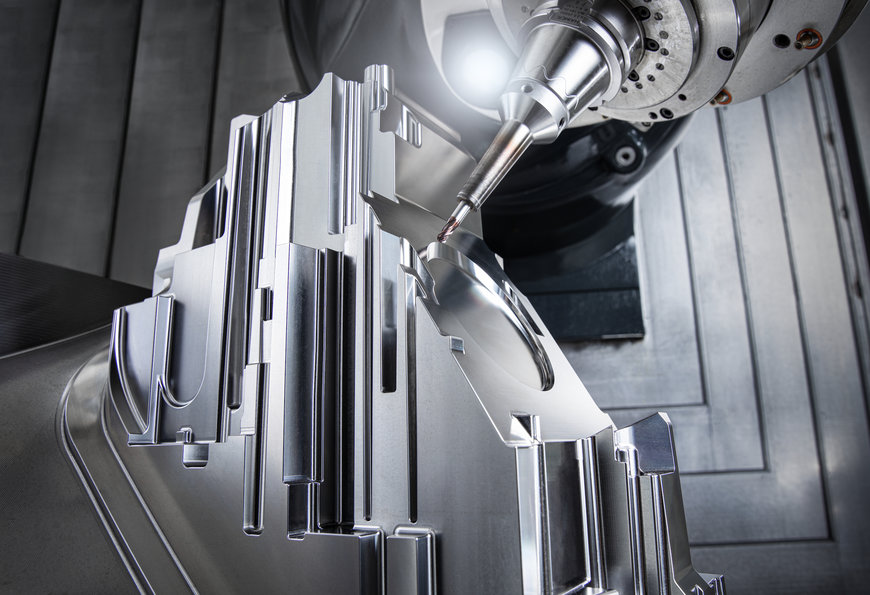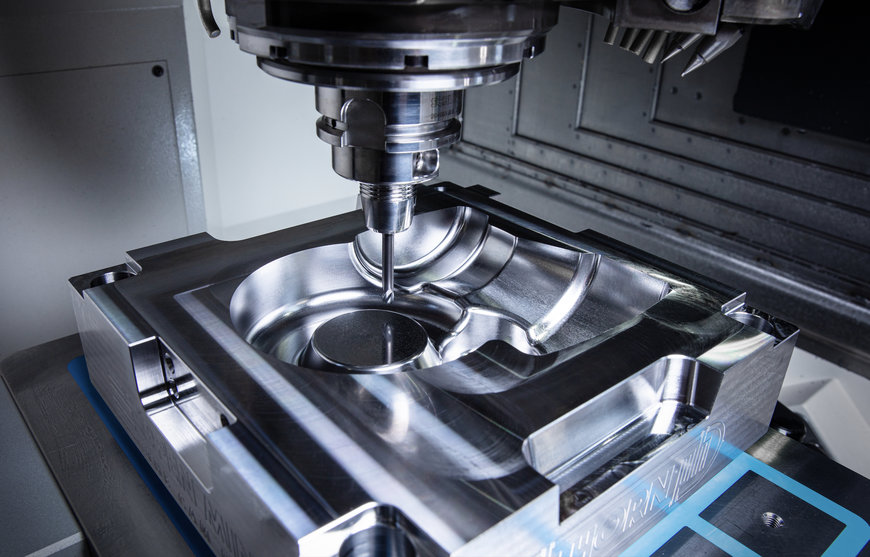metalworkingmag.com
30
'22
Written on Modified on
PH HORN News
Mastering processes: Mould milling at the limit
"Every block of stone contains a sculpture and it is the sculptor's job to discover it," the famous Renaissance artist Michelangelo once said. If the artist had traded in his hammer and chisel for today's modern five-axis machining centres and precision tools, we would be able to marvel at countless statues by the Italian sculptor today.

Modern machining technology using multiple axes is what makes the productive milling of complex components possible. The advantages of five-axis positional and simultaneous milling are particularly evident in tool and mould making. In addition to precise machines and efficient programming, the tools play a major role in economic machining. With its tool portfolio and know-how, Paul Horn GmbH offers numerous milling solutions for tool and mould making.
As with a conventional milling machine, modern five-axis machining centres have three linear axes (X, Y, Z) each orthogonal to the other. In addition, the machine has two swivelling or rotary axes (A, B or C depending on the arrangement). These enable three-dimensional machining of the workpiece at different angles. Five-axis milling of a component does not necessarily mean that all axes move simultaneously. It means that five sides of a workpiece can be presented to the spindle for machining. If all axes move simultaneously to produce the required geometry of the workpiece to be produced, this is called five-axis simultaneous milling.

Horn manufactures milling cutters with a maximum radius form deviation of +/- 0.005 mm. The importance of this precision can be seen when finishing forms using different cutters.
A large number of different Horn milling tools ensure high precision when machining a headlight mould. The component from the automotive industry is a significant challenge due to its various surfaces, shoulders and radii. Different high-feed milling cutters from the Horn DAH 8 system are used for roughing the mould. For finishing the mould, Horn engineers rely on different variants of the Horn DS tool system. In addition to various diameters of ball nose end mills, circular segment end mills are used. The advantage of the latter milling cutters, in contrast to ball or torus milling cutters, is that fewer passes are required when machining free-form surfaces, while the surface quality remains the same. This is particularly evident in the machining time for a given surface quality. Particular attention is paid to the transitions between the individual surfaces and the high surface quality that can be achieved.
Another machining example exemplifying Horn's expertise in tool and mould making is the milling of an injection mould. A high-feed cutter with a diameter of 12 mm is used for roughing the free-form surfaces. The milling cutters have a double radius geometry. This favours the flow of forces in the axial direction of the spindle and causes fewer radial forces. The geometry allows high feed rates to be used even with long tool overhangs without tool vibration. When finishing a mould with different ball nose end mills, there are three critical factors in achieving the required surface quality: the precision of the tool, powerful CAM software for precise machining and the concentricity of the fixture. Horn manufactures milling cutters with a maximum form deviation of the radii of +/- 0.005 mm. The importance of this precision can be seen when finishing a mould with different milling cutters. The program involved the use of a 6 mm and a 4 mm ball nose end mill.

Horn solved the problem of machining this titanium implant using different DS titanium milling cutters.
Five-axis milling is also used in the medical sector. For the production of a titanium implant, a user in this industry relies on Horn DS titanium milling cutters.
The shape of the implant consists of numerous free-form surfaces, has about 20 different radii and contains many fillets arranged at different angles. A milling cutter with a diameter of 10 mm and a corner radius of 0.2 mm and a milling cutter with a diameter of 6 mm and a corner radius of 0.5 mm are used for roughing. An end mill with a diameter of 1 mm is used for finishing. For the other operations on the implant, DS cutters of 10 / 6 / 4 / 2 and 0.6 mm diameter are used, as well as a ball nose end mill of 2 mm diameter and a DCG thread milling cutter with three cutting edges. The tool mills the M 3.5 x 0.5 through-hole thread, which is inclined at 35° and 8 mm deep, in one pass. The milling of two tapered recesses proved to be highly challenging. Their 43° taper is about 2 mm and must end in a geometrically "perfect" apex. These requirements are met using a Horn micro milling cutter for the roughing and finishing passes.
No matter what machining task a user has, the Horn portfolio has the right tool solution for almost every application involving the milling of moulds and free-form surfaces.
www.phorn.de

